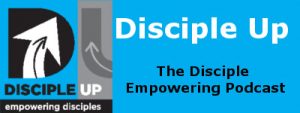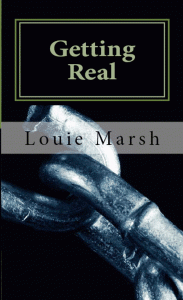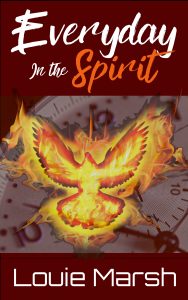Disciple Up # 217
Should We All Be Iconoclasts?
By Louie Marsh, 6-30-2021
icon·o·clast | \ ī-ˈkä-nə-ˌklast \
Definition of iconoclast
1: a person who attacks settled beliefs or institutions
2: a person who destroys religious images or opposes their veneration
Synonyms: bohemian, boho, counterculturist, deviant, enfant terrible, free spirit, heretic, individualist, lone ranger, lone wolf, loner, maverick, nonconformer, nonconformist
Antonyms: conformer, conformist
For the Meaning of Iconoclast, Break It Down
Iconoclast is a word that often shows up on vocabulary lists and College Board tests. How will you remember the meaning of this vocabulary-boosting term? If you already know the word icon, you’re halfway there. An icon is a picture that represents something. The most common icons today are those little images on our computers and smartphones that represent a program or function, but in the still-recent past, the most common icons were religious images. Icon comes from the Greek eikōn, which is from eikenai, meaning “to resemble.” Iconoclast comes to us by way of Medieval Latin from Middle Greek eikonoklastēs, which joins eikōn with a form of the word klan, meaning “to break.” Iconoclast literally means “image destroyer.”
First Known Use of iconoclast in English 1641, as an icon destroyer.
Article on this: https://www.huffingtonpost.ca/neil-seeman/iconoclast-genius_b_4116396.html
https://www.christianitytoday.com/history/issues/issue-88/great-iconoclast.html
Joy asked Lewis to autograph her copy of his book, The Great Divorce. He wrote, “There are three images in my mind which I must continually forsake and replace by better ones: the false image of God, the false image of my neighbours, and the false image of myself. C. S. Lewis 30 December 1952 (from an unwritten chapter on Iconoclasm).”
Lewis was saying that spiritual growth is iconoclastic because it constantly breaks our idols and replaces them with something better.
Iconoclast in Church History:
https://www.catholic.com/encyclopedia/iconoclasm
Iconoclasm (Eikonoklasmos, “Image-breaking”) is the name of the heresy that in the eighth and ninth centuries disturbed the peace of the Eastern Church, caused the last of the many breaches with Rome that prepared the way for the schism of Photius, and was echoed on a smaller scale in the Frankish kingdom in the West. The story in the East is divided into two separate persecutions of the Catholics, at the end of each of which stands the figure of an image-worshipping Empress (Irene and Theodora).
Luther & the Iconoclasts: https://lutheranreformation.org/history/luther-and-the-iconoclasts/
Was Jesus an Iconoclast?
“13The Passover of the Jews was at hand, and Jesus went up to Jerusalem. 14In the temple he found those who were selling oxen and sheep and pigeons, and the money-changers sitting there. 15And making a whip of cords, he drove them all out of the temple, with the sheep and oxen. And he poured out the coins of the money-changers and overturned their tables. 16And he told those who sold the pigeons, “Take these things away; do not make my Father’s house a house of trade.” 17His disciples remembered that it was written, “Zeal for your house will consume me.” 18So the Jews said to him, “What sign do you show us for doing these things?” 19Jesus answered them, “Destroy this temple, and in three days I will raise it up.” 20The Jews then said, “It has taken forty-six years to build this temple, and will you raise it up in three days?” 21But he was speaking about the temple of his body. 22When therefore he was raised from the dead, his disciples remembered that he had said this, and they believed the Scripture and the word that Jesus had spoken.” (John 2:13–22, ESV)
“1On a Sabbath, while he was going through the grainfields, his disciples plucked and ate some heads of grain, rubbing them in their hands. 2But some of the Pharisees said, “Why are you doing what is not lawful to do on the Sabbath?” 3And Jesus answered them, “Have you not read what David did when he was hungry, he and those who were with him: 4how he entered the house of God and took and ate the bread of the Presence, which is not lawful for any but the priests to eat, and also gave it to those with him?” 5And he said to them, “The Son of Man is lord of the Sabbath.”” (Luke 6:1–5, ESV)
What About the apostles?
“9For they themselves report concerning us the kind of reception we had among you, and how you turned to God from idols to serve the living and true God,” (1 Thessalonians 1:9, ESV)
“16Now while Paul was waiting for them at Athens, his spirit was provoked within him as he saw that the city was full of idols. 17So he reasoned in the synagogue with the Jews and the devout persons, and in the marketplace every day with those who happened to be there. 18Some of the Epicurean and Stoic philosophers also conversed with him. And some said, “What does this babbler wish to say?” Others said, “He seems to be a preacher of foreign divinities”—because he was preaching Jesus and the resurrection. 19And they took him and brought him to the Areopagus, saying, “May we know what this new teaching is that you are presenting? 20For you bring some strange things to our ears. We wish to know therefore what these things mean.” 21Now all the Athenians and the foreigners who lived there would spend their time in nothing except telling or hearing something new. 22So Paul, standing in the midst of the Areopagus, said: “Men of Athens, I perceive that in every way you are very religious. 23For as I passed along and observed the objects of your worship, I found also an altar with this inscription: ‘To the unknown god.’ What therefore you worship as unknown, this I proclaim to you. 24The God who made the world and everything in it, being Lord of heaven and earth, does not live in temples made by man, 25nor is he served by human hands, as though he needed anything, since he himself gives to all mankind life and breath and everything.” (Acts 17:16–25, ESV)
“15We ourselves are Jews by birth and not Gentile sinners; 16yet we know that a person is not justified by works of the law but through faith in Jesus Christ, so we also have believed in Christ Jesus, in order to be justified by faith in Christ and not by works of the law, because by works of the law no one will be justified. 17But if, in our endeavor to be justified in Christ, we too were found to be sinners, is Christ then a servant of sin? Certainly not! 18For if I rebuild what I tore down, I prove myself to be a transgressor. 19For through the law I died to the law, so that I might live to God. 20I have been crucified with Christ. It is no longer I who live, but Christ who lives in me. And the life I now live in the flesh I live by faith in the Son of God, who loved me and gave himself for me. 21I do not nullify the grace of God, for if righteousness were through the law, then Christ died for no purpose.” (Galatians 2:15–21, ESV)
- What happens when you tear something down without a plan to replace with something better?
What needs to be smashed today?
What are the idols (icons) in the church today that to be challenged and removed?
Remember I’m speaking largely metaphorically, not about physical idols.
Some say the denominations, like the Southern Baptists for example, need to deal with issues of racism in their history more and are even introducing parts of Critical Race Theory to do so?
Is it even possible to follow Jesus and not be an iconoclast to one degree or another?
What idols in our culture need confronting?
CRT? PC speech and action codes? Gender issues? Sexual morality in general?
Please Get In Touch!
Email – louie@discipleup.org

Check out the Disciple Up Facebook page:
My books –









